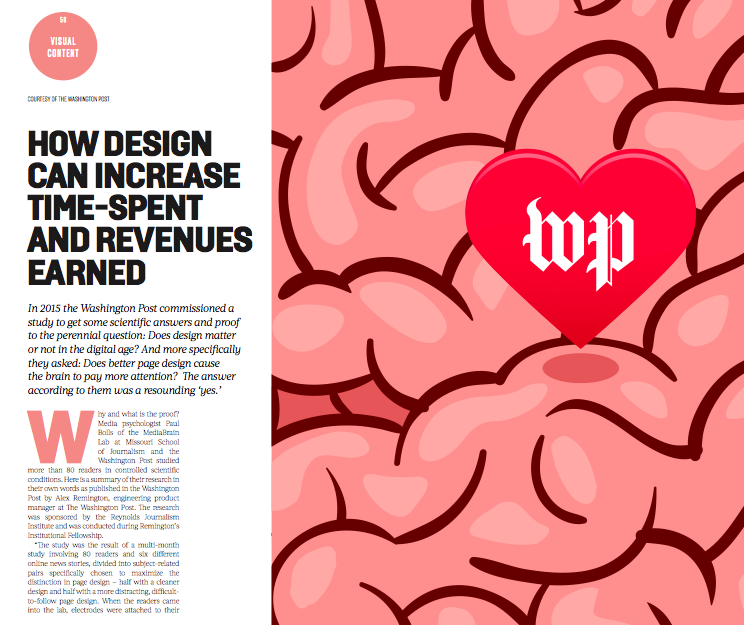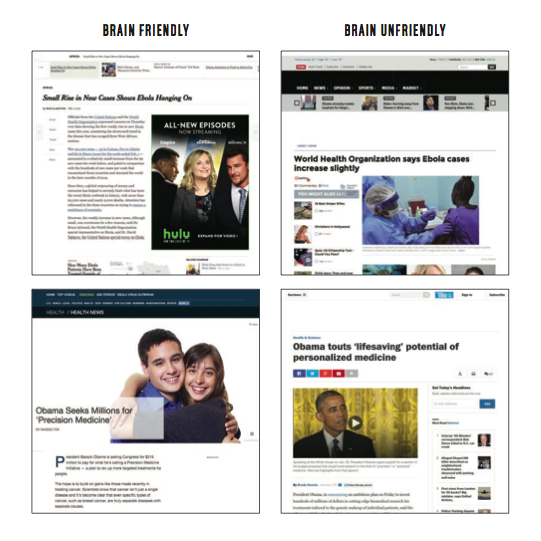
08 Jan How design can increase time-spent and revenues earned
In 2015 the Washington Post commissioned a study to get some scientific answers and proof to the perennial question: Does design matter or not in the digital age? And more specifically they asked: Does better page design cause the brain to pay more attention? The answer according to them was a resounding ‘yes.’
Why and what is the proof?
Media psychologist Paul Bolls of the MediaBrain Lab at Missouri School of Journalism and the Washington Post studied more than 80 readers in controlled scientific conditions.
Here is a summary of their research in their own words as published in the Washington Post by Alex Remington, engineering product manager at The Washington Post. The research was sponsored by the Reynolds Journalism Institute and was conducted during Remington’s Institutional Fellowship.
“The study was the result of a multi-month study involving 80 readers and six different online news stories, divided into subject-related pairs specifically chosen to maximize the distinction in page design — half with a cleaner design and half with a more distracting, difficult-to-follow page design. When the readers came into the lab, electrodes were attached to their hands and forearms to measure their cognitive and emotional engagement by tracking heart rate and skin conductance. Shortly after they finished reading the stories, they were asked a series of questions about their reaction to the story.
By statistically significant margins, readers agreed that better-designed stories were:
- More interesting
- Easier to read
- More enjoyable
- Made them want to find out more about the topic
- Helped them learn more about the topic
Also by statistically significant margins, readers were more cognitively and emotionally engaged by the stories with a cleaner design.
These findings mirror the data that The Washington Post has collected since redesigning its home page on August 26, 2015. Since the redesign, page views and visits are both up by seven percent, and the time spent by each unique visitor is up by three percent.
These gains suggest that the cleaner, more streamlined, less distracting new design is contributing to substantially better reader engagement.
Instinctively, newsrooms have long understood that readers prefer a clean page design emphasizing the story, and that flashy ads or recommendations to unrelated articles can distract the reader.

This data helps emphasize just how much good design can do to improve engagement. The human brain has limited resources, and is easily distracted. Eliminating distractions on the page can keep readers more engaged and more interested in reading another story.”


